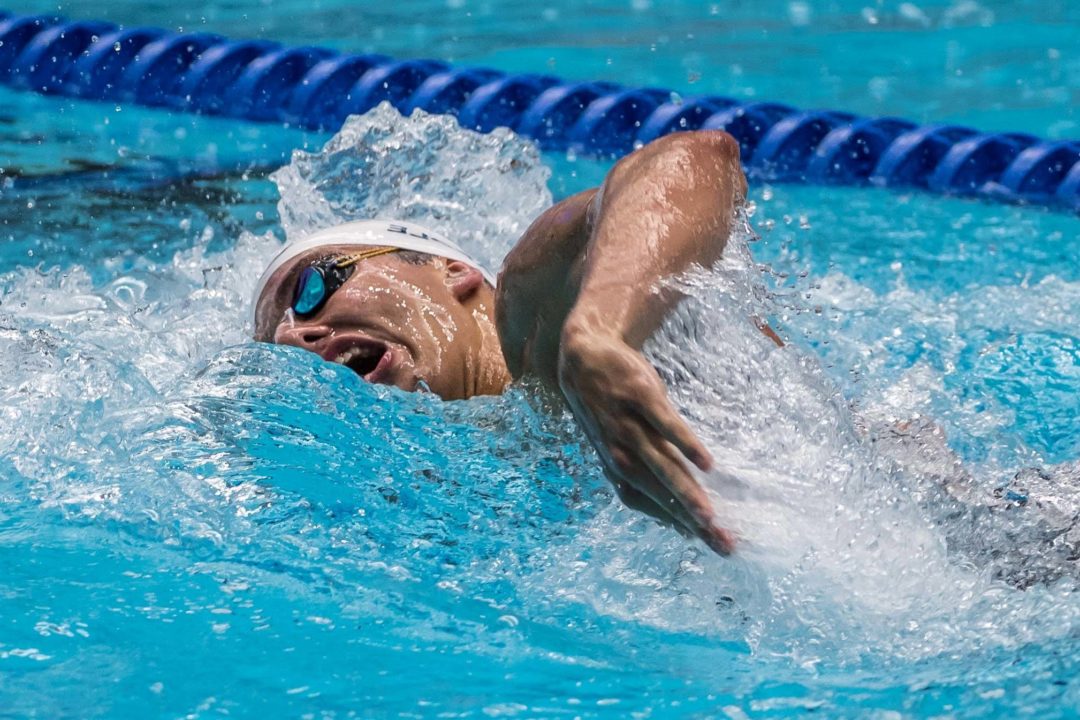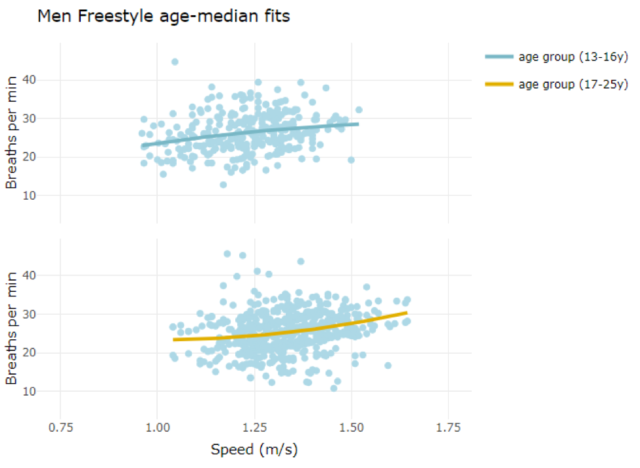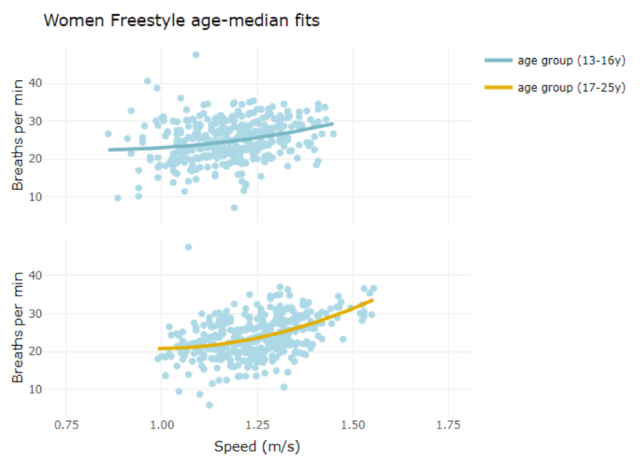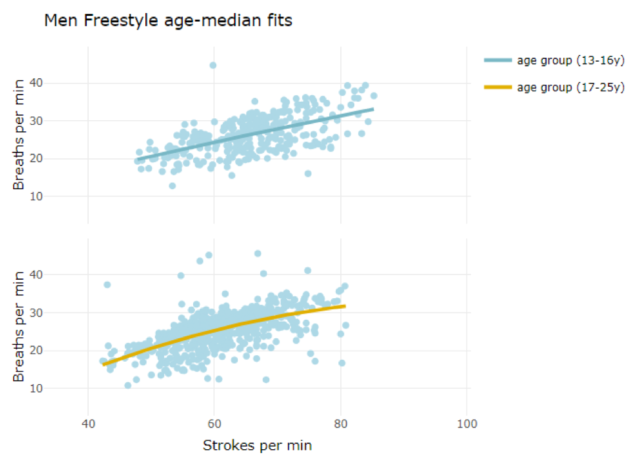Part 1:
- We previously discussed the effect of age on important metrics for each of the stroke types. Now we set to investigate the relationship between speed and breathing frequency metrics for freestyle.
- Coaches often request a specific breathing to stroking pattern, e.g. 2:1 or 3:1 strokes per breath. In this analysis, we explore the relationship between breathing rate and speed for typical swimming using our units to swim reps of 200m+.
- We divided swimmers into age-group categories: 13-16y, 17-25y for both genders and we looked at typical (median) breathing patterns in Freestyle for 200m reps or longer distances to explore how breath rates change according to swimming speed and stroke rate.
Breathing rates
Breathing rates were calculated from the Triton Breath Count metrics by dividing the breath counts by the time a swimmer spent overwater during each lap.
- As swimmers increase their speed, they are increasing effort and need to take in more oxygen, increasing their breathing rate.
- Swimmers who typically swim faster than their peers in training are also breathing faster, likely indicating more effort spent while training.
- Younger swimmers need to breath at a higher rate than older swimmers at a given speed, likely due to both more effort required to sustain the speed and smaller lung capacities
Breathing patterns
- Breathing rate is dictated by stroking rate and breathing pattern (how many strokes per breath)
To increase their breathing rate, swimmers can opt to increase their stroke rate or decrease the number of strokes between breaths
- We know swimmers do increase their stroke rate as they get faster (see previous Freestyle analysis).
- We see that for all swimmers stroking rate is correlated with breathing rate. As they stroke faster they are breathing faster which may be due to the effort of stroking more often or vice versa, trying to get their next breath more quickly or a combination of the two.
- Note that although younger swimmers breathe generally at a higher bpm, their breathing rate at a given stroke rate is similar to older swimmers: their faster breath rates are supported by generally faster stroking rates.
- The stroking patterns used by all swimmers fall between a 3:1 and 2:1 stroking pattern: swimmers generally do a mixture of both patterns across their 200m+ training.
- Women generally favour the 3:1 stroking pattern more than the 2:1 pattern, while the men, particularly the men in the older age group, favour the 2:1 pattern at some stroke rates.
- At the highest stroke rates, both the men and women favour the 3:1 pattern more than the 2:1 pattern, indicating that oxygen requirements are satisfied more easily for that pattern when the next stroke comes quickly.
- Women and men follow opposite patterns as stroke rates increase: at low stroke rates, women tend in general to follow a 3:1 pattern but start to mix in more 2:1 as stroke rates increase; men mix in more 2:1 at lower stroke rates than at the higher stroke rates.
Conclusions
- Swimmers who typically swim faster than their peers in training are also breathing faster, likely indicating more effort spent to achieve their speeds while training
- As swimmers age and get faster they are able to decrease their breathing rate (measured in number of breaths per min) at a given speed
- Coaches who favor a given strokes-to-breath pattern should be aware that stroke rate and speed also factor into their swimmer’s breathing pattern; these factors are complementary (higher stroke rates at higher speeds allow higher breath rates), but even so, a strict breath pattern policy may impact a swimmer’s preferred breath rate or even alter their stroke rate.
Part 2 teaser: We’ve seen here that generally breathing rate follows with stroking rate, but what happens within a 200m+ rep, from lap to lap? As the toll of the effort sets in, how do swimmers cope with the need for oxygen?
VISIT THE TRITONWEAR HQ
FOLLOW US ON INSTAGRAM
LIKE US ON FACEBOOK
FOLLOW US ON TWITTER
Tritonwear is a SwimSwam partner.
